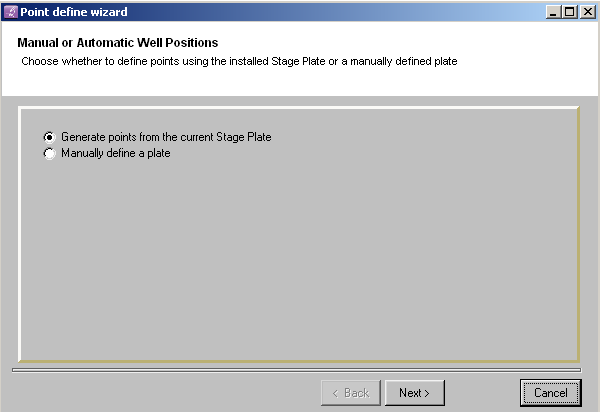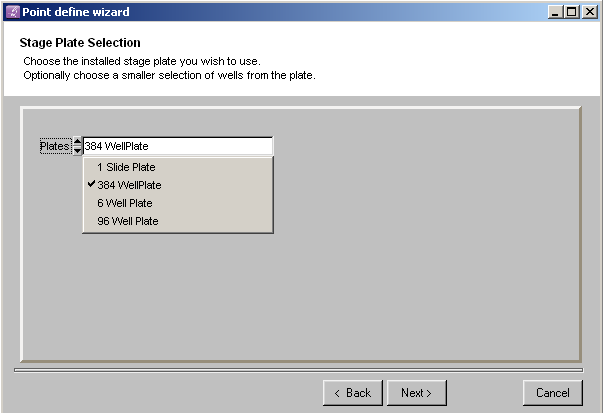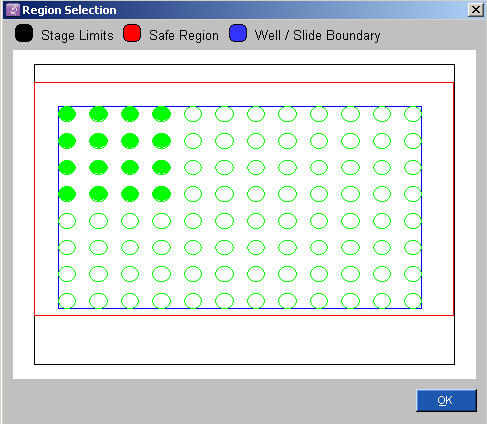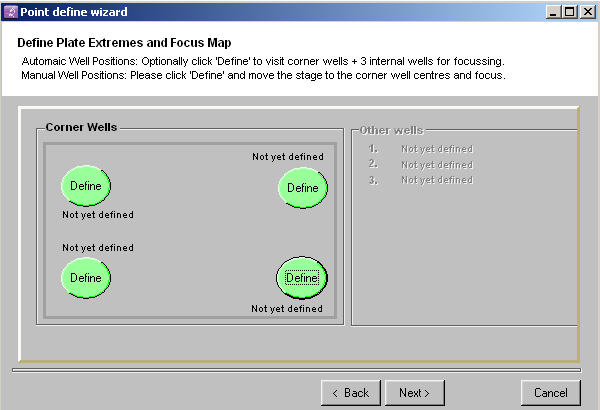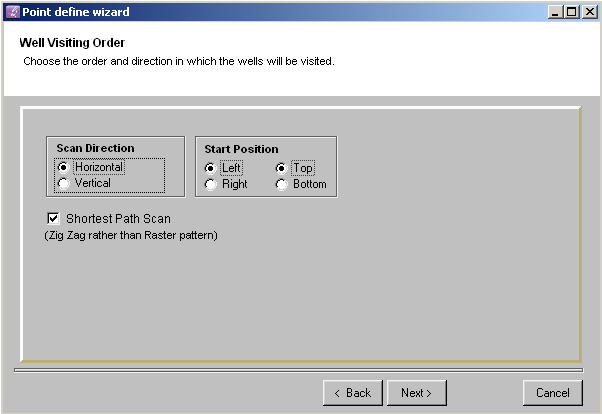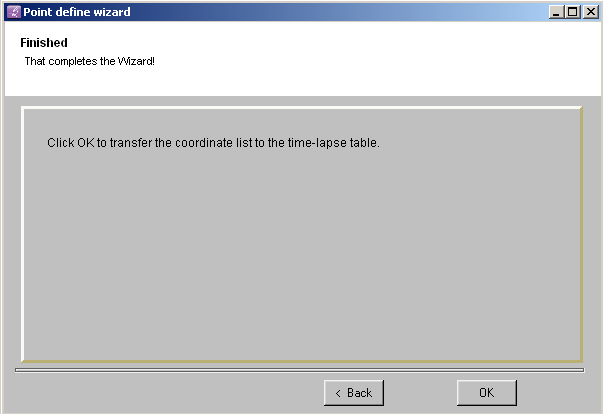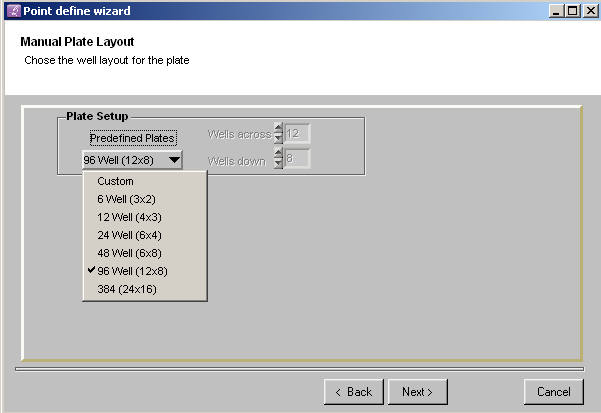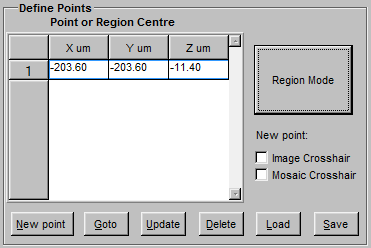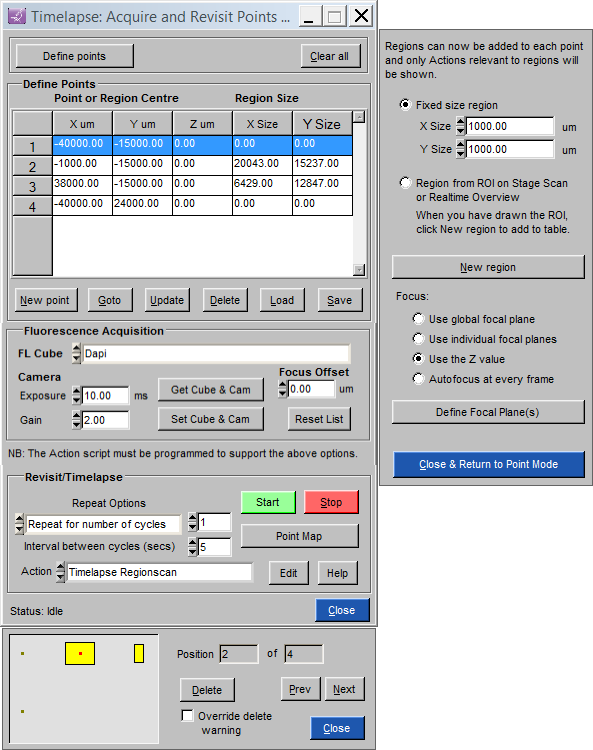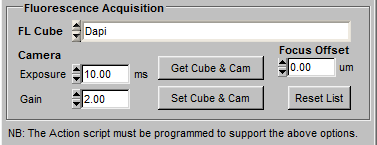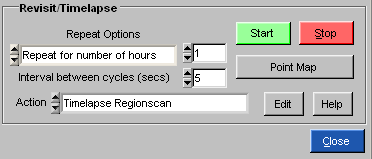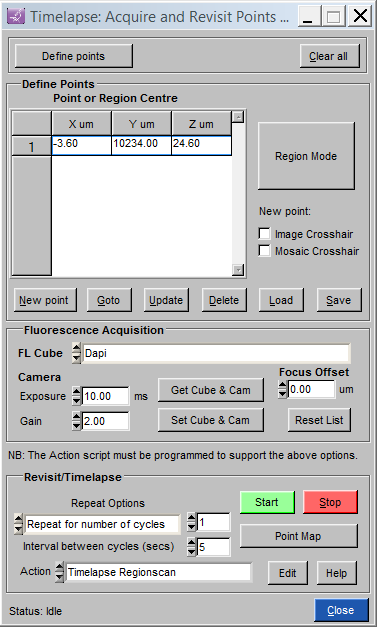 |
|
|
 |
Define Points automatic wizard - A list of points (each with its x,y, and z co-ordinates) can be generated by using the "Define points" automatic Wizard. |
 |
Define / Update Points Manually - A list of points (each with its x,y, and z co-ordinates) can be generated, edited, and updated manually. The tick boxes also allow new points to be created by clicking on the camera image or on a Realtime Overview or Stage Scan mosaic image. |
 |
Fluorescence Acquisition - For fluorescence acquisition it is possible to setup a different camera exposure time and gain, as well as a focus offset, for each cube. Scripts that support this feature will appear under the "Fluorescence Acq"section of "Action" menu. |
 |
Revisit / Timelapse - Once a list of points is available one can choose to perform certain sequence of actions (defined by a scriptin the "Action" dialog box) at each point.
For example in each point we can specify to preform autofocus, take a Fluorescence image, and then take a FLIM image. Other actions can be specified in the Action dialog box using an appropriate script file. |











